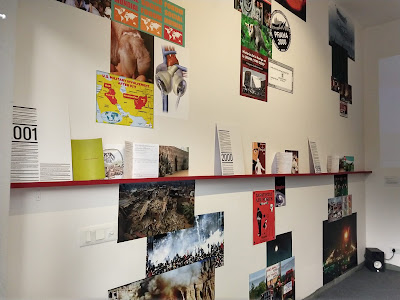Wednesday, August 12, 2020
IIT Delhi: A Modernist Case Study
Madan Mahatta Archives, Randhir Singh
IIT Delhi: A Modernist Case Study
IIT Delhi: A Modernist Case Study
exhibited at Photoink, Delhi
Jan-Feb 2020
This photographic exhibition brings together a contemporary study of the campus of Indian Institute of Technology, Delhi - designed by architect J K Chowdhary and engineer Gulzar Singh. IITs were the key spaces to produce engineers for building modern India. These were state education campuses of science that got built during the period of Nehru government during the 1960s when the spirit of scientific temper was fresh and the mood for a modernizing nation. The exhibition "IIT Delhi - A Modernist Case Study" brings together photographs by Madan Mahatta and Randhir Singh in a dialogue with each other.
Mahatta's photographs are mostly black and white, taken during the time the campus was freshly inaugurated. The photographs take us back to a time period when it was till not fully inhabited, the trees wait to grow, and signs of life wait to adapt to a modern institutional space. Randhir Singh's photographs, mostly in colour bring to us the life of the campus in its humanised reality today. In Mahatta's photographic documentation, the campus emerges as an edifice of scientific ambition and achievement - architectonically as well as spatially. Here we see the emphasis on its stark forms, empty corridors with sharp shadows or the craft of be-jeweling the architectural object. Singh's photographs bring to us a softened landscape of the campus, in its diffusions produced by humans, greenery or even light forms.
Looking at the photographers who document the same space through eyes distanced by more than 60 years, one is constantly caught up in the then & now of both, the life of the campus, as well as the way in which one would like to make sense of its historical projection. What does one make of an institution today? How secular does the space remain? What political forces lie embedded in the disposition of this space? These are question, I am certain, the contemporary artist grapples with while framing the building for the present generation. Where does one place the values through which the campus was once conceived, and how does it become a photographic inquiry? Randhir Singh's photographs balance the dilemmas of modernism today quite artfully.
The strategic display of photographs within the gallery space work with the sharp sightlines that the campus's modern vocabulary embues. Viewers are forced to readjust perspectives while aligning their sights within the gallery space. The curation constantly creates different levels of intimacy through the sizing and placement of the photographs on the wall. The couplings of photographs are not literal (before after), rather, each try to extend their time into one another, producing an intermediate haze / blur within which the question of then and now doesnot resolve into a moral position, rather offers a considered empathy. Thus, changes, adaptations or appropriations of the campus as sometimes seen in Singh's photographs donot necessarily put us in comparison, rather, bring us in a continuum.
It is this aspect, that was finely achieved in the photographic case study of the IIT Delhi.
Monday, August 10, 2020
Subscribe to:
Posts (Atom)










